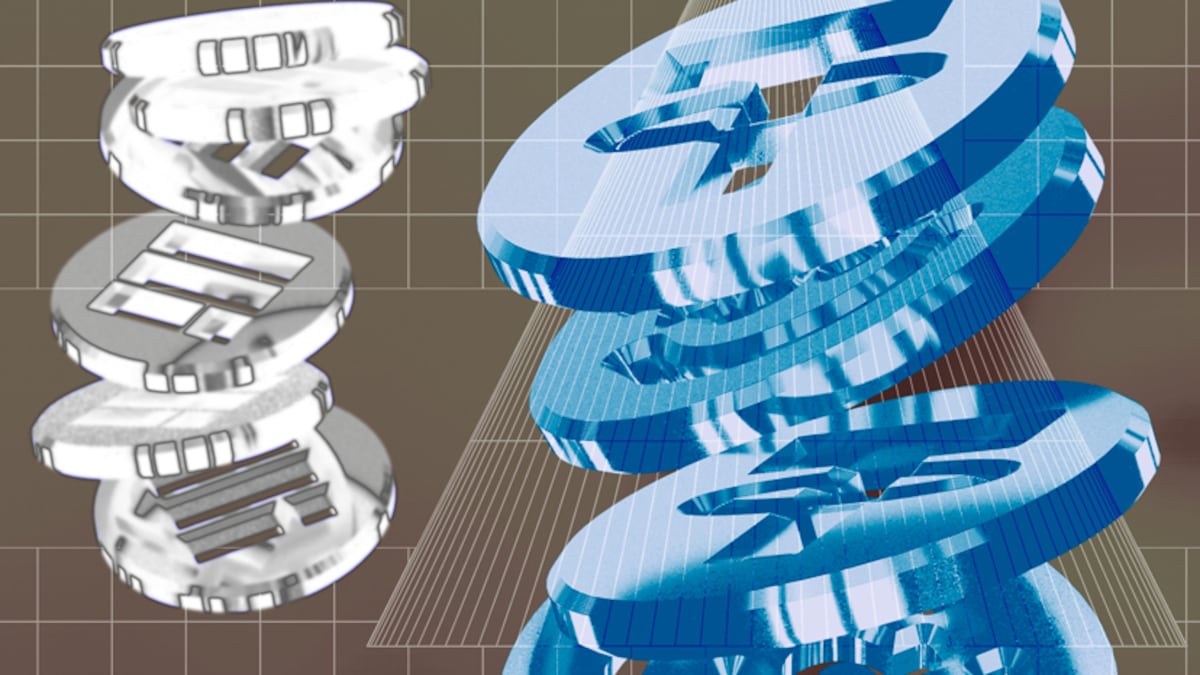Centralised stablecoins USDT and USDC added billions in value last week after US regulators cracked down on Paxos, the company that issues the Binance USD stablecoin.
Investors like stablecoins – cryptocurrencies that are usually pegged to the dollar’s price – because they provide refuge from more volatile cryptocurrencies. That refuge idea was tested this month, when the Securities and Exchange commission blindsided crypto traders with a crackdown on BUSD. The action rocked the industry already battered by enforcement against US crypto exchange Kraken and the collapse of Sam Bankman-Fried’s FTX.
Spooked traders sent the BUSD supply plunging by $3.2 billion – a 20% drop. Since the SEC’s action targeted BUSD, a centralised stablecoin, some suggested decentralised stablecoins may stand to gain market share. The thinking goes that decentralised stablecoins are currently less susceptible to regulatory enforcement than their centralised counterparts.
Here's an overview of the current stablecoin marketshare, with $USDC, $USDT, $BUSD, and $DAI leading the way, respectively. Now that the SEC has halted $Paxos from minting new BUSD, it will be interesting to see whether this volume ($16B+) is absorbed by decentralized stables pic.twitter.com/1d1lNR1n5X
— David Alexander II (@Mega_Fund) February 13, 2023
But inflows to decentralised stablecoins haven’t panned out as many thought.
Over the past week, the money flowing out of BUSD appears to have gone to rival centralised stablecoins instead of decentralised alternatives.
Tether’s USDT and Circle’s USDC added around $2 billion and $1 billion, equal to 3% and 2% of their market caps respectively. TrueUSD, the fourth-largest centralised stablecoin, has also gained 5.3% to its market cap.
In comparison, MakerDAO’s DAI, the biggest decentralised stablecoin by market cap, added less than 0.1% to its market cap over the past seven days.
The reason investors have flown into other centralised stablecoins like USDT rather than decentralised ones may simply be due to centralised stablecoins commanding higher liquidity – or availability of funds – and their popular use across DeFi.
“Stablecoins may all be worth $1, but all have different utility depending on where/how they can be used,” CurveCap, a pseudonymous crypto analyst, told DL News. “Tether is extremely useful thanks to its market cap and integrations.”
USDT is currently the largest stablecoin by market cap with over 70 billion tokens. It’s issued by Tether on 13 blockchains but is also unofficially available on 48 other blockchains with varying degrees of liquidity. In comparison, DAI has just over 5 billion tokens in circulation and is only officially issued by MakerDAO on one chain, Ethereum, where 88% of DAI remains. It’s available on 39 other chains but tends to have low liquidity. Some suggest that DAI is not fully decentralised since a large portion of DAI in circulation is backed by centralised stablecoins, such as USDC and GUSD.
Although decentralised stablecoins have mostly remained stagnant, the governance tokens associated with the protocols that issue decentralised stablecoins have soared in value.
LUSD issuer Liquity protocol’s LQTY token jumped 50% on the Paxos SEC news.
The Reflexer Ungovernance (FLX) token, the governance token of the Reflexer protocol that issues the decentralised stablecoin RAI, also doubled in value around the same time
According to Brice Berdah, head of growth at Liquity, these price jumps were caused by low liquidity and trading volumes rather than real adoption.
“Most of the tokens that reacted are quite low liquidity,” he said. “So it doesn’t take that much to make them react strongly… So for instance, the Reflexer token went from $10 to over $20 at some point, but now it’s like $16 or $17. The volume is very tiny.”
LUSD’s market cap increased by 1.5%, equal to only $3.64 million in inflows. RAI fared worse, with its market cap dropping by 5% despite the FLX token rally.
